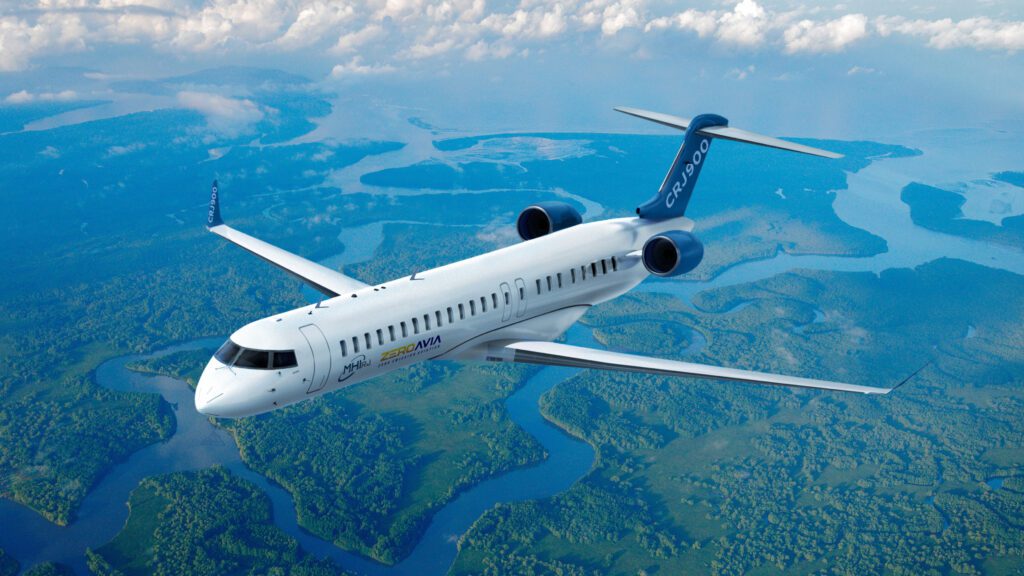
ZeroAvia signed a Memorandum of Understanding (MOU) with MHI RJ Aviation Group at the end of 2021. As part of the new agreement that was recently announced, MHIRJ will support ZeroAvia’s pursuit of certification for its hydrogen-electric powertrain. (Photo courtesy of ZeroAvia)
ZeroAvia, a startup developing hydrogen-powered engine technology for commercial aviation, expanded its existing agreement with MHI RJ Aviation Group. Both parties signed a Memorandum of Understanding (MOU) at the end of 2021. As part of the new agreement, MHIRJ will provide engineering services and aircraft integration in support of ZeroAvia’s pursuit of certification for its hydrogen-electric powertrain to retrofit onto regional jets. MHIRJ also brings its OEM experience to facilitate the certification process for ZeroAvia.
ZeroAvia plans to enter its ZA600, 600kW powertrain into service in 2024 and is progressing towards certification of the powertrain for 10- to 20-passenger aircraft. The team is also developing a 2–5MW modular powertrain, the ZA2000, to support turboprops with 40 to 80 seats. “The key in both of these systems is to deliver a system to meet certification requirements,” a representative for ZeroAvia told Avionics International in an emailed statement. “This will require a good deal of collaborative work with regulators including the CAA, EASA, and FAA.”
One of the team’s main objectives is to advance their UK testing program—supported by Aerospace Technology Institute (ATI), Innovate UK through the ATI Programme, and the UK Government’s Department for Business, Energy and Industry Strategy (BEIS).
Later on, the focus will be on performing flight tests in the U.S. with a short take-off and landing (STOL) aircraft to explore the capabilities of the ZA600 powertrain. Learnings from this type of flight testing will serve to enhance the research and development program, explained the representative from ZeroAvia. “There are engineering challenges such as optimizing the weight of the system, but we have clear timelines for all of these to hit our planned certification targets,” the ZeroAvia representative added.
The hydrogen-electric powertrain from ZeroAvia converts hydrogen into electricity using hydrogen fuel cell power generation. The technology is unique “because it represents the most practical and scalable technology to tackle the full climate change impact of commercial flight,” shared the representative from ZeroAvia. “[It] is, to date, the only technology demonstrated in commercial-scale aircraft. Compared to existing combustion engines, it offers zero-emission flight and lower operating costs (particularly as clean hydrogen costs fall). The fuel cell system also delivers the range and payload that are necessary for commercial aviation, which battery-electric systems cannot deliver.”
ZeroAvia announced in April that they entered into a partnership with hydrogen fueling company ZEV Station. The signed MOU entailed collaboration to develop an initial regional airport project that will demonstrate the potential of hydrogen-electric propulsion systems. “There is enormous potential for airports to act as hydrogen hubs precisely because there will be significant demand,” remarked ZeroAvia’s VP of Infrastructure, Arnab Chatterjee.
Another big announcement from ZeroAvia came last December, when they published the news that United Airlines and Alaska Air Group had invested a total of $35 million into the company. According to the announcement, United could purchase up to 100 of the engines from ZeroAvia and expects to integrate them into United Express aircraft beginning in 2028.